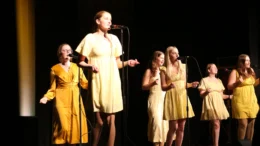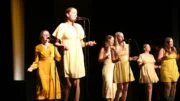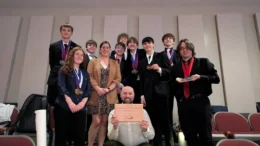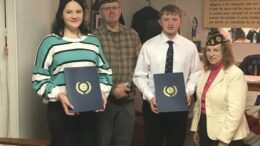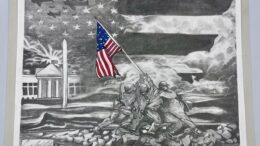TORONTO (AP) — From a park bench on the Victoria College campus, Margaret Atwood — class of 1961 — can trace her life of the mind.
“It was here that I decided to become a Victorian (literature student) at a time when it wasn’t at all fashionable. They were considered gauche, kitsch, sentimental, absurd,” she says, remembering the times she would dash back and forth across the park to take English classes on one side and history and philosophy on the other. “But the foundations of women’s equality — John Stuart Mill, those kinds of thinkers — were Victorians and the position of women was a real hotbed topic, extending all the way from proper undergarments to higher education.
“One of my cherished facts is that women weren’t allowed into classical art schools because they might see naked women,” she adds with a laugh. “What a shock!”
Atwood is among the world’s most celebrated authors and most famous Canadians, but on this humid afternoon she is undisturbed by passersby, beyond a few who momentarily turn their heads to look at the woman in the dark sun hat and blue buttoned shirt.
Just months shy of her 80th birthday, the longtime Toronto resident has otherwise never been more noticed. She has written the year’s most anticipated novel, “The Testaments,” the sequel to her classic “The Handmaid’s Tale” and a Booker Prize finalist. Its contents were so guarded over the summer that early review copies were sent under a different title for fear of their being stolen.
In December, Atwood will be honored in New York by the Center for Fiction, which has given its first ever On Screen Award to her and to Hulu executives for the Emmy-winning adaptation of “The Handmaid’s Tale.” Hulu and MGM are now planning a series based on “The Testaments.”
Atwood is a literary writer who tries not to act like one, taking mock umbrage — “Of course. What do you take me for?” — when asked if she has read “The Hunger Games.” She apologizes for being “too erudite,” although she can no more avoid being erudite than she can avoid speaking at all. Whatever the subject — Victorian literature, resistance movements, “Game of Thrones” — she is not only knowledgeable, but interesting — interesting and funny, interesting and incisive. Her voice, like her writing, is level and pointed, with the slightest inflection turning the mood toward irony, scandal or foreboding.
“There is a great wit along with the breaking of rules taking place” in her books, says fellow author and Canadian Michael Ondaatje. “And as an individual she has been a remarkably brave spirit, supporting many causes to do with writers and politics.”
Atwood has written more than 40 books — novels, story collections, essays and poems — and her awards include the Booker Prize for “The Blind Assassin” and Canada’s Giller Prize for “Alias Grace.” She is a feminist hero who in the introduction to a recent edition of “The Handmaid’s Tale” defines a feminist novel not as idealizing women, but humanizing them, with “all the variety and character and behavior that implies.”
“The Handmaid’s Tale,” published in 1985, is well settled alongside “1984,” ”The Origins of Totalitarianism” and others in the canon of books warning us how bad bad can be. In the Republic of Gilead, formed in what was Cambridge, Massachusetts, after a radical coup, women are confined within a strict caste system that determines how they dress, how they are named (some for the men they serve) and with whom they may bear children. They are forbidden to vote, have jobs, or read or write.
Some are complicit, others risk their lives resisting. The narrator, “Offred” (“of-Fred”), is torn between accommodation and defiance.
“I wish this story were different,” Offred laments. “I wish it were more civilized. I wish it showed me in a better light, if not happier, then at least more active, less hesitant, less distracted by trivia.”
As Atwood likes to point out, everything in “The Handmaid’s Tale” either has happened or could happen. Gilead, she says, is not “invented, but curated,” so rooted in the actual and the possible that she speaks of reissuing the novel with footnotes. For instance, the iconic handmaid uniforms of bright red cloaks and white bonnets that obscure their faces were inspired by the image on a container of Old Dutch Cleanser.
“Each detail I can tell you chapter and verse who did it when,” Atwood says.
In announcing “The Testaments” last fall, Atwood cited readers’ curiosity about Gilead and, more darkly, “the world we’ve been living in.”
As she explains during her recent interview, she wrote “The Handmaid’s Tale” in part as a response to the anti-feminist backlash of the 1980s. She didn’t expect to write a sequel because she didn’t expect the rise of Donald Trump and the world becoming more like the original novel. Even before he became president, she was resurrecting Gilead. In February 2017, just weeks after Trump’s inauguration, she sent a memo to her literary representatives that outlined “The Testaments.”
The new book is set around 15 years after Offred fled to an undetermined future.








